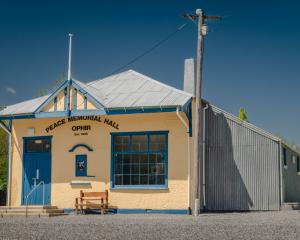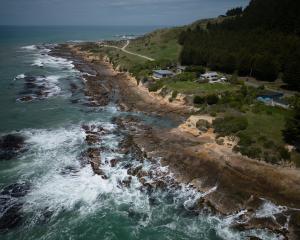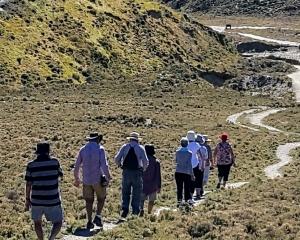A sea kayak is the perfect craft from which to explore our beautiful coastline and observe our rich marine life. Dunedin kayaker Maggie Oakley shares her favourite voyages close to the city.
While we treasure the times when we are bow-to-nose with wildlife, kayakers need to follow a few simple rules to ensure any encounters are enjoyable for the birds and mammals with which we share the seas.
It is less affected by the predominant northerly-going tidal current and you can paddle north or south with ease, while rocky headlands protect river bars and beaches from the worst of the prevailing southerly swell.
A sea kayaker can hug the coastline within Big Eddy, enjoying sandy beaches and interesting rock stacks, and can also weave and potter among the many rocky outcrops that would be unsafe for larger craft to venture near.
With a favourable Port Chalmers marine forecast (less than 15 knots), I have travelled this coastline and kayaked on and off almost all of the beaches from Cornish Head to Aramoana.
Anyone with an interest in this coastline will find that a sea kayak can really come into its own as a craft for observing our abundant marine wildlife, up close and sometimes even personal.
TRIP TWO
Cornish Head to Warrington Beach and return.
What you'll see: Rock features, fur seals and dolphins.
Getting there: The quickest route to launch your kayak from the beach at Cornish Head is to take the northern motorway from Dunedin and turn right from State Highway 1 into the Waikouaiti township.
Go right into Edinburgh St and continue on into Matakana Rd until you reach the car park at the end of the road. This is 45km from Dunedin and a 40-minute drive.
If choosing to launch from Karitane, the coastal route from Warrington provides wonderful views of the coastline. There is a formal parking place to leave your vehicle before launching into the Waikouaiti River.
Journey: The head of the bay is a sandy beach backed by dunes. At the north end is a narrow entrance to a tidal lagoon, around which stands the township of Waikouaiti. At the south end of the beach there is a narrow sandy peninsula, south of which the Waikouaiti River enters the bay.
The township of Karitane stands on the west bank of the river, close within the entrance.
Landing: The surf anywhere in Waikouaiti Bay is generally good for launching and landing kayaks. If not, use the river at Karitane for stress-free access.
The south side of the river is best for entering or exiting. Once at high tide, while kayaking around the peninsula, I saw two interesting blow holes. From here the coastal paddle to Warrington has spectacular rocky features, at Green Point and Brinns Point.
Closer inspection often reveals many New Zealand fur seals resting up. Spring and summer, during the breeding season, is when we need to be careful and more thoughtful to the consequences of our paddling close to these rocks.
For example, a stampede of adult seals from rock to water is a sure sign we have disturbed these animals.
Important facts
Crafts: Either enclosed or sit-on-top kayaks are suitable craft to use.
Level of experience: While the surf zone for getting on and off the beach can be intimidating at times, "Big Eddy" provides alternative and safer options for less-experienced paddlers.
Journey time: This is dependent on wind speed and direction. And your paddling speed is based on your fitness, ability, and kayak characteristics.
Swells: The New Zealand Pilot advises "swells are constant, heaviest in autumn and winter, between south and west often of height 2-4 metres".
It is the high cliffs forming the peninsula that provide the shelter from southerly winds and the landmass of the peninsula providing deflection of the swells.
Safety: Never go with fewer than three people, check the marine forecast before you go, wear a buoyancy aid at all times and let someone know where you are going and when you will be back.












